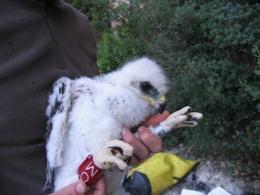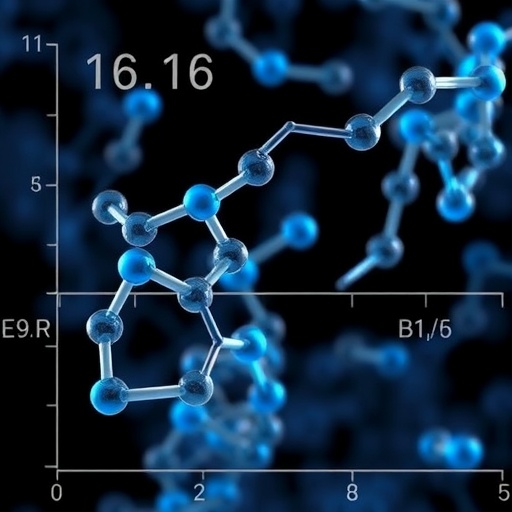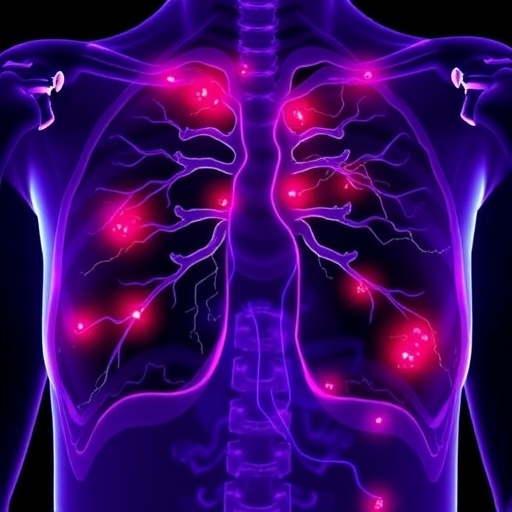Power lines: a threat to all birds worldwide

Credit: Conservation Biology Group (University of Barcelona-IRBio)
An article published in the journal Global Ecology and Conservation presents a new five-step protocol to mitigate the mortality of birds of prey due to accidents with infrastructures (power lines, ponds, etc.) and other unnatural causes (direct hunting). The protocol that could also be applied to the conservation of other terrestrial vertebrates -even marine species-is a new scientific contribution from the Conservation Biology Group , led by the lecturer Joan Real, from the Faculty of Biology and the Biodiversity Research Institute (IRBio) of the University of Barcelona.
The study covers a wide spectrum of demographical, ecological and populational factors of the affected species by unnatural deaths, and it unifies criteria on the actions to take sequentially -at multi-spatial scales- to prioritize the areas efficiently as well as the populations and infrastructure that need mitigation efforts. Other authors of the study are the experts Antonio Hernández Matías, Santi Mañosa, Àlex Rollan and Rafael Bosch (UB-IRBio).
Five steps to mitigate mortality due to unnatural causes
Most of the animal populations are divided into subpopulations that contribute differently to the populational dynamics. Some local populations behave as demographical sources -they bring individuals to other local populations- and others are considered to be sink (they would extinct if it weren’t for the clear entrance of animals from other populations).
The new protocol enables researchers to identify the local populations on which they should focus their most efficient actions to reduce unnatural-caused deaths. “The first phase of the protocol would be to identify the sink populations, which show a higher death rate than birth rate due to the threat we want to mitigate”, notes Joan Real, director of the Conservation Biology Group (UB-IRBio).
“Conservation of these populations -he continues- does not only affect the populations but the whole species, since it could prevent the sink species from extinguishing like other neighbouring local populations which act as demographical sources”.
In the next phase, researchers should identify the most frequented areas by the individuals (nesting, feeding, etc.) in the areas with more sink populations. Then, the protocol determines the infrastructures that are a threat due to their features (ponds without ramps to prevent animals from drowning, roads without elements to avoid accidents, etc.) or their location in the chosen habitat by the studied species.
The last phase includes all the obtained data with the information related to the infrastructures where the episodes that caused the death of these animals were registered.
Power lines: a threat to all birds worldwide
Bird electrocution is a global threat which is affecting a higher number of species every time. Some of the most affected birds are emblematic species such as the Bonelli’s eagle (Aquila fasciata), the Spanish imperial eagle (Aquila adalberti), the eastern imperial eagle (Aquila heliacal), the bearded vulture (Gypaetus barbatus), the Egyptian vulture (Neophron percnopterus), the Eurasian eagle-owl (Bubo bubo), the Cape vulture (Gyps coprotheres), the California condor (Gymnogyps californianus), the Andean condor (Vultur gryphus), the martial eagle (Polemaetus bellicosus) or the bald eagle (Haliaeetus leucocephalus).
In order to mitigate the frequency of unnatural risks, the protocol presents the Bonelli’s eagle as a reference, a threatened eagle around Europe. “Focusing the protocol on specific species is justified when these are considered highly threatened, therefore, it seems a priority to promote actions to improve the conservation of their species”, notes Hernández-Matías, lecturer at the Department of Evolutionary Biology, Ecology and Environmental Sciences of the UB, and first author of the study.
The expert adds that “in case of considering the mitigation of threats (accidents, collisions, electrocution, drowning), in the whole series of affected species and under a situation of limited budgets, we could make a great effort to mitigate threats in areas that are relevant for the most common species and not for the most threatened ones”.
A protocol with multi-spatial scale action criteria
In Catalonia and the rest of the peninsula, accidents with power lines and human persecution activity cause most of the deaths of the Bonelli’s eagle. The new protocol would enable researchers to improve the viability of the Bonelli’s eagle in the long run, with higher survival rates and larger self-sustaining populations -regulated by natural factors. “The highest positive impact will be reached through electrocution episodes in the scupper territories and populations. Once these are identified, we need to apply the spatial and danger criteria for the infrastructures to improve the efficiency of conservation actions”, notes Hernández-Matías.
Finding the differential use of the area a species does and the level of the risk of different power supports is essential in a natural space where a few birds of prey nest. “The study reveals that there can be about seven couples of Bonelli’s eagle in one area with 15,428 supports, and only 229 -a 1.4%- represent a higher threat and should be a priority correction.
When the geographical area is large, we need to consider the demographical heterogeneity of the population to optimize the actions since the contribution to the viability of the species is not the homogeneous in all populational groups.
Improving the efficiency of mitigation actions in the natural environment
Half of the north of the Peninsula and Catalonia are geographical areas where mitigation actions should be prioritized in order to protect the populations of Bonelli’s eagle. The effectiveness of the corrections will depend on how ideal the presented actions and prioritization of the areas is, as well as the support with a higher negative impact, authors say. The lack of uniformity in the criteria and systems to correct dangerous supports and the lack of centralized information on the correction operations make it harder for these mitigation actions to work out in power lines.
“Mitigation of the electrocution impact on birds is not easy, and the process to get the necessary information is long and expensive. The amount of supports we need to correct and its high economic cost is the first conditioning factor to reduce this threat in Catalonia, where about 60% of the areas show low survival levels for this species”, note the authors.
The correction method is the second conditioning factor. The most efficient system is to modify the original structure of this support to make a low-risk design that removes this problem for good. In some cases, this works by making some relatively simple operations; in others, the most effective results are more expensive (power lines under the floor, removal of some spots, etc.). However, these actions require a long-term monitoring to guarantee this support does not become dangerous again.
In a context of environmental and economic sustainability, “the developed protocol provides a reference framework to quantify the financial cost of corrections in infrastructures and obtain the expected benefit in the population of the threatened species”, conclude the authors.
###
Media Contact
Rosa Martínez
[email protected]
Original Source
https:/
Related Journal Article
http://dx.




